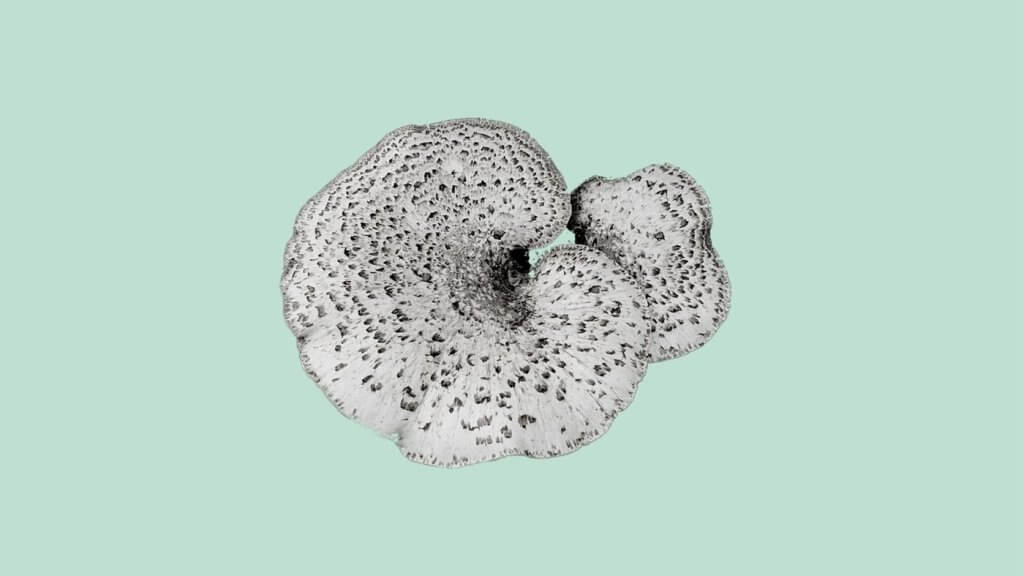The edible dryad's saddle, Cerioporus squamosus or Polyporus squamosus mushroom, has a stunning pattern atop its cap. It looks akin to pheasant feathers hence why this wild mushroom is called pheasant back mushroom. It’s easy to forage and can be eaten raw or cooked.
Dryad’s saddle provides more than it takes from the surrounding ecosystem. You’ll find it growing on host trees as a mycological mushroom and a white-rot fungus.
It decomposes dying or dead hardwood trees like elm, just as other polypores like chicken of the woods or hen of the woods do.
Dryad’s saddle plays a crucial role in the surrounding ecosystem as a decomposer and nutrient recycler.
What Are You Foraging For Right Now?
We're thrilled to hear your ideas. What would you like to submit today? Feel free to share your thoughts and experiences with us.
Are Dryad Saddles Edible?
The dryad’s saddle mushroom’s edible nature is likely the best thing about it. Biting into a pheasant back mushroom leaves a surprisingly delicious taste.
As long as these little wild mushrooms are harvested and prepared correctly, they provide substantial and meaty morsels.
Dryad’s saddles can be a top option if you’re looking for a tasty ingredient for homemade cooking, as they add a subtle texture to any dish.
As versatile little fungi, the dryad’s saddles are also well suited to being sauteed, pickled, dehydrated, or ground into hearty gravies, soups, broths, and sauces that pack a punch.
Foraging the Pheasant Back Mushroom
Otherwise known as the dryad’s saddle, you’ll find these fungi in abundance. Pheasant back is easy to spot, so it’s perfect for beginner mushroom hunters.
But, sadly, many beginner foragers blank true morel lookalikes like the pheasant back mushroom. They’re just too sure that these wild mushrooms are not only inedible but poisonous.
The typical habitat of these morel mushrooms is almost exclusively dead elms. You’ll likely find the dryad’s saddle haunting decaying log stumps and injured or semi-dead trees.
Because dryad’s are springtime mushrooms, they often grow around morels. So, if you spot a morel, a pheasant back mushroom isn’t far.
Is there a False or Poisonous Pheasant Back Mushroom Lookalike?
Often people ask, ‘are there poisonous pheasant back mushrooms?’
No, there are no poisonous lookalikes.
So, when you’ve learned how to identify these dryad’s saddles, you’ll feel confident enough to eat these little chewy mushrooms.
Beginner foragers should consider foraging with a field guide to ensure they’re plucking a younger dryad saddle, not one of the less palatable older ones.
When you come across some older specimens, you may find them corky and challenging. These older chewy fungi may not be appropriate for fresh consumption.
But they are still good for soup, gravy stocks, and many other pheasants back mushroom recipes.

Cooking Pheasant Back Mushrooms
Before you even get to the cooking bit, you want to make sure you pick the tastiest mushrooms. Choose the small, delicate-looking mushrooms.
Please don’t wait until the cap is gigantic and falling over itself with its weight. These larger, older mushroom caps are usually tough.
However, if you see these gigantic mushroom caps when mushroom foraging, you can still take them home to make delicious mushroom stock or broth.
Young pheasant back mushrooms taste best with minimal prep. But, if you’re one of those who thinks the dimpled pore surface has a strange texture when cooked, you can peel it off relatively easily.
Now that you’re home and have your mushrooms ready to be cook dust them clean. Then, slice them up as thin or fat as you prefer and sauté them in oil or butter. They’ll taste delish in many different pheasants back mushroom recipes.

Is Pheasant Back Mushroom Medicinal?
Absolutely. Whether you cook or tincture dryad’s saddle, it has excellent immunomodulating properties.
What’s ace about this little wild mushroom is how it interacts with the chemistry in every single person’s body and focuses on what the body tells IT.
This means that this wild mushroom can modulate the immune system. So, if you suffer from a poor immune system, it can help your immune system, kicking it up a notch.
This wild mushroom is similarly clever because it can help when your immune system is overactive. For example, for people with an auto-immune disease, pheasant back mushroom can aid in decreasing the immune system’s response so it behaves as it should.
Although these medicinal benefits are pretty impressive, remember that there’s no scientific backup.
However, because it’s packed full of nutritional benefits, there can’t be any harm in consuming these young mushrooms.
Getting into the great, wet outdoors in search of edible plants, herbs, fruits and fungi is one of Sarah’s favorite outdoor pursuits. She thinks there’s nothing better than combining her passion for hiking with the start of the foraging season. Sarah’s definitely not afraid of a little rain and dirt, it’s all part of the fun.

